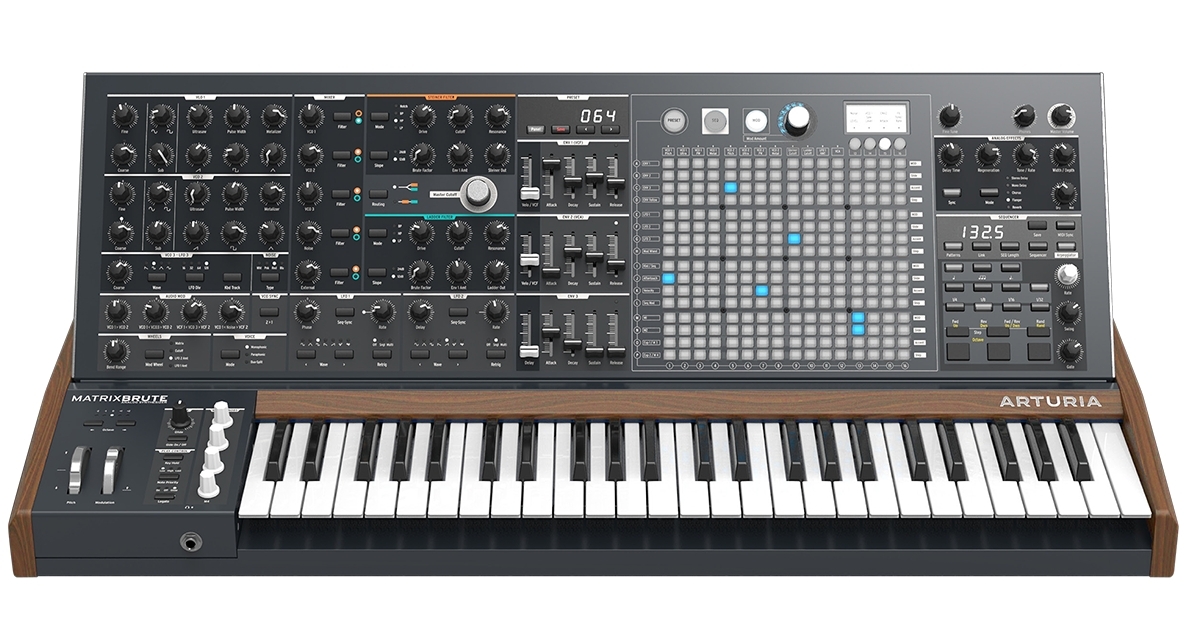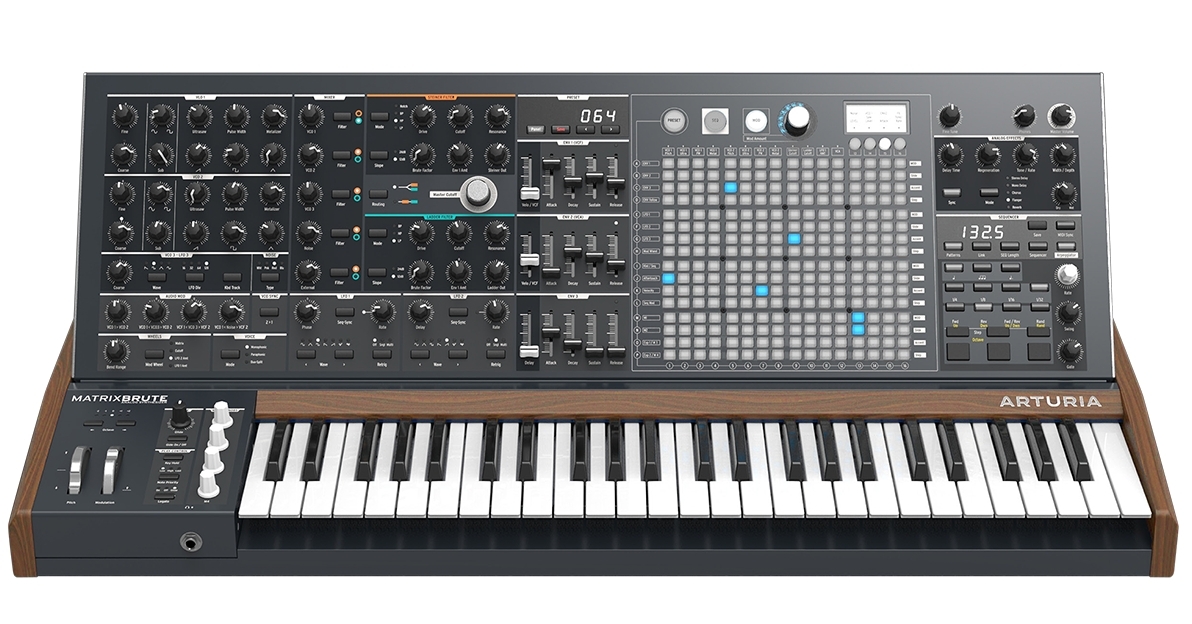
 Et tu brute? The new MatrixBrute in all its analogue glory
Et tu brute? The new MatrixBrute in all its analogue glory
One of the hits of NAMM so far judging by the reaction of everyone who sees it is the Arturias MaxtrixBrute synth. Peter Gardner is not immune.
There is some kit in this world that, when you see it, you just have the unquenchable urge to get hands on with it immediately. The lure of hundreds of buttons and knobs and flashing lights, just pulling you towards it like a siren in the water ambushing sailors in lore of old, so when you look upon Arturias' latest synth, be wary of falling for its brutish charm.
With a 100% analogue signal path generated by its three oscillator plus sub oscillator design, through to the Steiner-Parker and ladder filter sections patchable in series or parallel configurations, this is a beauty. Routing is handled by a 16x16 modulation matrix that allows you to assign any of the 16 modulation sources to any of the 16 modulation destinations, offering a staggering amount of control over your patches.
Those patches can also be saved for later use, so whilst the MaxtrixBrute is not a modular synth design, its possibly the closest you will get without module racks and patch cables. With this setup you get the best of both worlds with control more in depth than most other synths whilst still maintaining the ability to instant patch recall when your performing.
Speaking of performing, it has a 49 note controller keyboard with a full complement of additional sequencer and arpeggiator controls. A USB connection allows you to connect it to the editor and patch librarian software for easy management, its fully MIDI controllable and impressively it includes 12 CV inputs and 12 CV outs for connection and control of any modular gear you wish to connect up alongside it.
This is a real synth programmer’s synth, and whilst this Brute may well overwhelm a number of users, many more may well find themselves being lured by its charms.
Here's the spec list:
Main Features
Analog Matrix Synthesizer
256 Preset memory locations
2 Analog Exponential VCO’s:
Saw + UltraSaw, Square +Pulse width, Triangle + Metalizer, Sub
1 Analog Linear VCO/LFO
Saw, Square, Triangle, Sine waveforms; LFO time divisions; Key track
VCO 2>1 Hard Sync
Audio Mod:
VCO1>2 ; VCO1 < VCO3> VCO2 ; VCF 1 < VCO3> VCF 2 ; VCF1 < Noise> VCF2
Noise Generator:
White ; Pink ; Red ; Blue noise types
5 input Audio Mixer with Filter routing
Steiner Parker filter with 12+24 db per octave modes ; Drive ; Brute factor; Low Pass, High Pass, Band Pass, Notch
Ladder filter with 12+24 db per octave modes ; Drive ; Brute factor; Low Pass, High Pass, Band Pass
2 LFO’s
Sine, Tri, Square, Ramp, Saw, Random, S&H
3 Envelope Generators
2 Attack, Decay, Sustain, Release
1 Delay, Attack, Decay, Sustain, Release
External Audio In
16x16 Matrix modulation panel
64 step sequencer
STEP enable, Slide, Accent, Modulation
Save and recall sequence patterns on the fly
Analog Effects
Stereo delay, Delay, Flanger, Chorus, Analog Reverberator
Arpeggiator
12 CV / Gate Inputs/Outputs
Audio Input, Line or Instrument level
Stereo audio output
MIDI and USB I/O
Pedal inputs for Expression and Sustain
Tags: Audio


Comments